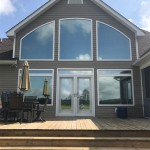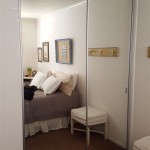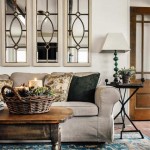How Do I Frame an Existing Bathroom Mirror?
Framing an existing bathroom mirror elevates the aesthetic of the space with minimal effort. This process offers a cost-effective alternative to replacing the entire mirror, providing a significant visual upgrade. Several methods exist for framing a bathroom mirror, each with its own set of advantages and considerations.
Assessing the Existing Mirror and Bathroom Environment
Before beginning the framing process, a thorough assessment is crucial. This evaluation helps determine the appropriate framing method and materials. Key considerations include:
- Mirror Size and Weight: Larger, heavier mirrors require more robust framing materials and potentially additional support.
- Wall Material: The wall's composition (drywall, tile, etc.) influences the type of fasteners and installation techniques.
- Bathroom Humidity: Bathrooms are inherently humid environments. Opt for moisture-resistant materials to prevent warping and damage.
- Existing Decor: Consider the current bathroom style and color palette when selecting frame materials and finishes.
Method 1: Applying a Frame Directly to the Mirror
This method involves adhering a frame directly onto the mirror's surface. It is generally suitable for smaller, lighter mirrors.
- Material Selection: Lightweight materials like wood, plastic, or composite molding are ideal. Ensure the adhesive is specifically designed for mirror application.
- Preparation: Thoroughly clean the mirror surface with a glass cleaner to ensure proper adhesion.
- Application: Apply the adhesive to the back of the frame pieces according to the manufacturer's instructions. Carefully position the frame onto the mirror, applying even pressure.
- Securing: Use painter's tape to secure the frame in place while the adhesive cures.
Method 2: Building a Frame Around the Mirror
This approach involves constructing a frame around the mirror directly on the wall. It offers greater flexibility in terms of material choices and is suitable for larger mirrors.
- Material Selection: Wood, tile, metal, or composite materials can be used. Select materials that complement the existing bathroom décor.
- Measurements: Precise measurements are crucial for a seamless fit. Measure the mirror's dimensions accurately.
- Construction: Cut the framing materials to the correct size and assemble the frame using appropriate joinery techniques.
- Installation: Attach the frame to the wall using suitable fasteners, ensuring it surrounds the mirror evenly.
- Finishing: Apply sealant or caulk to fill any gaps between the frame and the mirror or wall. This prevents moisture penetration and enhances the finished look.
Method 3: Utilizing Adhesive Mirror Clips
Adhesive mirror clips offer a less permanent and less invasive solution for framing an existing mirror.
- Clip Selection: Choose clips that are appropriately sized for the mirror's thickness and weight.
- Placement: Mark the desired location of the clips on both the mirror and the wall.
- Installation: Adhere the clips to the mirror and the wall according to the manufacturer's instructions.
- Frame Attachment: Carefully slide the frame pieces onto the clips, ensuring a secure fit.
Choosing the Right Frame Material
The choice of frame material significantly impacts the final aesthetic and the frame's durability. Consider the following factors when selecting a material:
- Moisture Resistance: Opt for materials that are naturally moisture-resistant or have been treated to withstand humidity, particularly in bathrooms with limited ventilation.
- Style Compatibility: Select a frame material and finish that complements the overall bathroom design and existing fixtures.
- Maintenance Requirements: Consider the ease of cleaning and maintenance for different materials. Some materials require more frequent cleaning or specialized care.
Essential Tools and Materials
Gathering the necessary tools and materials beforehand streamlines the framing process. The specific requirements will vary depending on the chosen method, but common items include:
- Measuring Tape: Accurate measurements are essential for a proper fit.
- Level: Ensures the frame is installed straight and level.
- Saw (if cutting materials): Choose the appropriate saw for the frame material being used.
- Adhesive or Fasteners: Select an adhesive or fasteners suitable for the chosen method and wall material.
- Safety Glasses: Protect eyes from dust and debris during the framing process.
- Caulk or Sealant: Seals gaps between the frame and mirror/wall for a finished look and moisture protection.
Ensuring Proper Ventilation
Regardless of the framing method used, ensure adequate ventilation around the mirror to prevent moisture buildup, which can damage both the mirror and the frame over time. This is particularly important in bathrooms with limited ventilation.
- Air Circulation: Allow for sufficient air circulation around the mirror to prevent condensation.
- Exhaust Fans: Utilize bathroom exhaust fans to remove excess moisture after showering or bathing.

How To Frame Out That Builder Basic Bathroom Mirror For 20 Or Less

Bathroom Mirror Frames 2 Easy To Install Sources A Diy Tutorial Retro Renovation

Diy Stick On Mirror Frame Sawdust Sisters

Mirror Frame Diy How To Update A Basic Bathroom Our Faux Farmhouse

Diy Bathroom Mirror Frame Without Removing Clips Her Happy Home

Diy Bathroom Mirror Frame With Molding The Happier Homemaker

Easy Diy Tutorial Adding Trim Around A Giant Mirror For Ers

How To Build A Wood Frame Around Bathroom Mirror Young House Love

Framing A Bathroom Mirror Tempting Thyme

Diy Mirror Frame Remodelaholic








